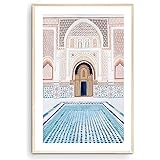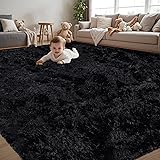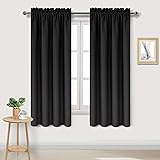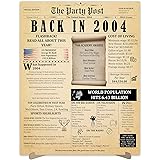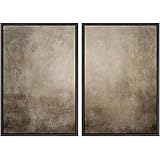As homeowners increasingly prioritize functionality, wellness, and personalized aesthetics, understanding the trajectory of kitchen design trends for 2025 is paramount. According to insights from the National Kitchen and Bath Association (NKBA), a significant 87% of homeowners now lean towards concealed storage solutions, signaling a definitive shift in what constitutes a modern and practical kitchen space. The video above offers a valuable initial glance into the evolving landscape of kitchen aesthetics; however, a deeper dive into these transformative shifts reveals not just what’s fading, but also the underlying design philosophies driving future innovations.
This comprehensive guide expands upon the video’s crucial points, offering expert analysis and practical strategies to navigate the dynamic world of kitchen design trends in 2025. We will explore the elements that are gracefully exiting the spotlight and illuminate the avant-garde concepts poised to redefine the heart of the home, ensuring your renovation or update is both stylish and enduring.
The Departures: Kitchen Trends Fading in 2025
As design evolves, certain elements, once celebrated for their modernity, yield to new preferences. For homeowners planning kitchen renovations, recognizing these shifts is crucial for creating a space that remains contemporary and functional for years to come. The era of purely aesthetic choices without practical consideration is largely over.
Open Shelving and Exposed Pantries
While open shelving and exposed pantries have long been showcased in design magazines for their minimalist appeal and visual accessibility, real-world application reveals significant drawbacks. The constant battle against dust accumulation, grease splatter (especially near cooking zones), and the relentless demand for immaculate styling has made these features impractical for many households. Homeowners frequently report a sense of visual clutter, even when items are meticulously arranged, detracting from the serene environment often desired in a modern kitchen.
Consequently, the shift towards concealed storage solutions is undeniable. The NKBA’s finding that 87% of homeowners prefer hidden storage underscores a collective desire for organized, clutter-free spaces. Practical alternatives include pull-out pantry shelves, which enhance accessibility and maximize vertical space within cabinets. For smaller kitchens, vertical storage, such as floor-to-ceiling pantry cabinets or specialized corner cabinet solutions like Lazy Susans and Rev-A-Shelf systems, become indispensable. Even existing open shelves can be pragmatically transformed with the addition of woven baskets or fabric bins, offering both aesthetic appeal and discreet storage.
Kitchens with Insufficient Natural Light
The impact of natural light extends far beyond mere illumination, profoundly influencing mood, productivity, and the perceived spaciousness of a kitchen. Spaces lacking adequate daylight often feel confined, oppressive, and can even contribute to feelings of lethargy or seasonal affective disorder. Therefore, the notion of deliberately designing kitchens with minimal natural light is becoming obsolete.
Current kitchen design trends in 2025 emphasize maximizing daylight and implementing sophisticated lighting designs. An impressive 88% of homeowners now prioritize thoughtful lighting strategies to elevate their spirits and enhance functional utility, as reported by the NKBA. Beyond enlarging windows or incorporating new skylights and solar tubes during major renovations, homeowners can introduce layered artificial lighting. This includes a strategic combination of overhead ambient lighting, task-specific pendant lights, and under-cabinet LED strip lights, allowing for versatile mood-setting. Moreover, integrating mirrors opposite windows can effectively amplify natural light by reflecting it deeper into the space, making even a compact kitchen feel more expansive and bright.
Waterfall Countertops
Once a hallmark of contemporary luxury, waterfall countertops, characterized by their continuous stone slab flowing from the counter down to the floor, are experiencing a decline in popularity. While visually striking, their high cost, intensive material usage, and often inflexible design can limit functionality and introduce a sense of monolithic austerity. Furthermore, Elle Decor now advises exploring alternative methods to accentuate the inherent beauty of natural stone, indicating a move away from this singular, often overdone, aesthetic.
Modern preferences lean towards more nuanced and organic expressions of stone. Counter splashes, where the same countertop material extends up the wall as a backsplash, offer a cohesive yet less dominating presence. Raw-edge finishes, particularly in natural quartz or soapstone, provide a softer, more tactile aesthetic that aligns with biophilic design principles. Rounded countertop edges are also gaining traction, offering a gentler silhouette compared to the sharp lines of traditional waterfall designs. For those seeking visual intrigue without a complete overhaul, incorporating a contrasting material, such as a rich butcher block or a boldly colored quartz, on a kitchen island can create a dynamic focal point.
Handleless, Sleek Cabinets
The minimalist movement brought handleless, sleek cabinets into vogue, promising an uncluttered visual landscape. However, practical experience has revealed their inherent frustrations. Push-to-open mechanisms can be prone to failure, and the recessed grooves designed for finger pulls often become unintended collectors of crumbs, dust, and grime, proving difficult to keep clean in a high-traffic environment. Furthermore, the absence of hardware exacerbates fingerprint and smudge visibility, particularly in homes with children.
Living etc. highlights a renewed appreciation for decorative hardware that seamlessly blends functionality with distinct style. Updating cabinetry with hardware is one of the most accessible and impactful ways to refresh a kitchen’s aesthetic. Matte black handles can impart a sophisticated, modern edge, while brass or aged brass hardware introduces a touch of contemporary elegance and warmth. For a more vintage or personalized appeal, ceramic or glass knobs can infuse character into an otherwise modern space. These elements not only enhance ergonomics but also serve as vital design accents, allowing for an expression of individuality that handleless designs inherently lack.
All-White or Gray Kitchens
For many years, all-white or predominantly gray kitchens epitomized cleanliness, modernity, and a blank canvas for design. However, this aesthetic has begun to wane, with homeowners increasingly finding these monochrome palettes sterile, uninviting, and lacking in personality. The desire for a truly welcoming, lived-in home environment surpasses the appeal of a showroom-like or utilitarian space.
The NKBA’s 2025 kitchen trend report confirms a decisive pivot towards warmer, more natural color palettes. Green, celebrated for its connection to biophilic design principles, has emerged as the top choice for 76% of designers, lending a calming, fresh, and organic atmosphere. Sage or forest green cabinets can create a profound sense of tranquility. Blues, from serene sky hues to deep navies, evoke a sense of calm sophistication, particularly when paired with complementary metal hardware. Warm browns, especially in conjunction with rich wood tones like walnut or oak, are experiencing a significant resurgence, anchoring kitchens with a classic, mid-century modern gravitas. Budget-friendly options for integrating these colors include swapping out dishware for earthy ceramics, introducing colored textiles, or painting a single island or accent cabinet to test the waters of this vibrant kitchen design trend.
The Arrivals: Ascendant Kitchen Design for 2025
As certain trends recede, innovative concepts emerge, promising enhanced functionality, aesthetic depth, and a more personalized living experience. These kitchen design trends in 2025 are poised to redefine the modern culinary space.
Bold Ceiling Treatments
The ceiling, often termed the “fifth wall,” is stepping into the design spotlight as a critical element for elevating a kitchen’s overall aesthetic and spatial perception. Living etc. highlights that bold ceiling treatments are becoming focal points, moving beyond mere white surfaces to intentional design statements. This trend recognizes the ceiling’s potential to introduce texture, warmth, and architectural interest, fundamentally transforming the room’s ambiance.
Options range from classic wooden beams, which infuse rustic charm, to sophisticated geometric paneling or expressive wallpaper, each capable of dramatic impact. For budget-conscious homeowners, painting the ceiling a deep navy, a soft terracotta, or even a nuanced charcoal can create instant drama and depth without extensive construction. Faux wood beams or textured ceiling tiles offer a luxurious look, adding warmth and intricate detail. Interior designer Gretchen Clubs aptly notes that a statement ceiling draws the eye upward, making even smaller kitchens feel more expansive and dynamic by creating an illusion of height and intricate detail.
Mood Kitchens: The Art of Layered Lighting
The concept of “mood kitchens” epitomizes the evolution of lighting from purely functional to deeply emotional, influencing well-being and productivity. The NKBA reports that an impressive 88% of homeowners are now leveraging lighting design to craft specific atmospheres, transforming their kitchens into versatile spaces adaptable to various activities and times of day. This signifies a profound shift towards intelligent lighting systems that cater to diverse needs, from energetic morning routines to intimate evening gatherings.
Layered lighting, as emphasized by NKBA expert Sarah Robinson, is central to this trend, enabling homeowners to set the perfect tone for every segment of their day. Implementing dimmable LED lights provides foundational flexibility, allowing for precise control over brightness levels. Integrating pendant lights over kitchen islands serves both as task lighting and an aesthetic focal point. Furthermore, color-changing LED strips, installed under cabinets or along toe-kicks, offer a high-tech solution for dynamic ambiance, often controllable via smartphone applications for seamless personalization. Maximizing natural light through large windows, glass doors, or skylights remains paramount, providing a crucial balance of brightness and serenity that artificial lighting complements.
Integrated Coffee Bars
As kitchens increasingly become hubs for both culinary activity and leisure, the integrated coffee bar is emerging as a must-have feature for modern living. Elle Decor identifies this trend as a move towards specialized, clutter-free stations that blend luxury with practical efficiency. These dedicated zones elevate the daily ritual of coffee or tea preparation, transforming it into a seamless, sophisticated experience while liberating valuable counter space.
Interior designer Claire Jung points out that coffee bars have evolved significantly, transitioning from simple countertop appliances to fully integrated systems with hidden storage and bespoke elements. To implement this trend, homeowners can designate a specific cabinet or a compact section of the kitchen, installing pull-out shelves for coffee machines, grinders, and accessories. Dedicated compartments for mugs, various syrups, and even small sugar jars contribute to a polished, café-like presentation. For an added touch of elegance and visual interest, lining the back of the coffee bar with an intriguing tile pattern or a mirror can create a captivating focal point, merging both function and refined style within the modern kitchen design for 2025.




